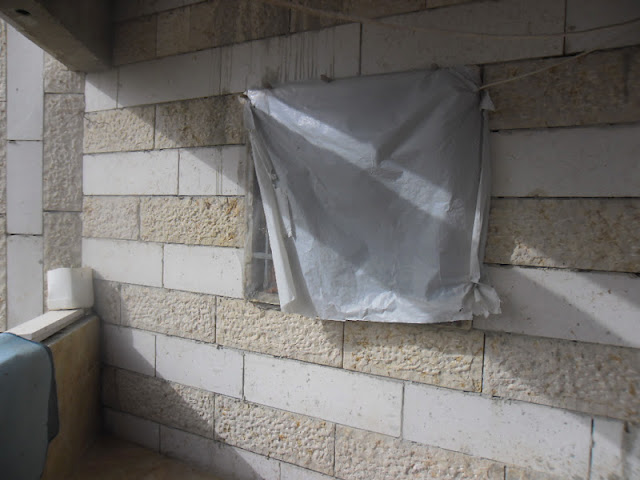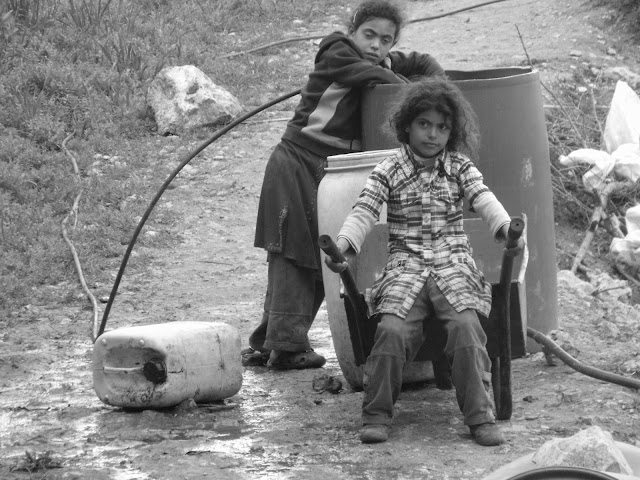Tag: House Demolition
-
Jordan Valley: Three families invaded by one hundred Israeli soldiers in Al Jiftlik
by Kim 17 March 2012 | International Solidarity Movement, West Bank On March 15th at 16:00 we got a call about three house demolitions in the village of Al Jiftlik, near the Jordan Valley. We threw ourselves into the first public transportation vehicle to take us to the village. It was dusk when we came to…
-
Idhna: A family without windows
by Peige 12 March 2012 | International Solidarity Movement, West Bank After three years of marriage Amani and Hussein Batran wanted a house of their own, somewhere to raise their two children, 4 year old Khalil and 3 year old Layali. They took out two loans from the bank and construction began. Now, three years…
-
The strangulation of a village
by Sylvia 10 March 2012 | International Solidarity Movement, West Bank Sheikh Nasri looks resigned as he describes his home as “the most terrorised village in the country”. With 34,000 uprooted trees in the last two years and some 4,800 dunams of land stolen, the village of Al Jab’a has little to smile about. Eighteen…


